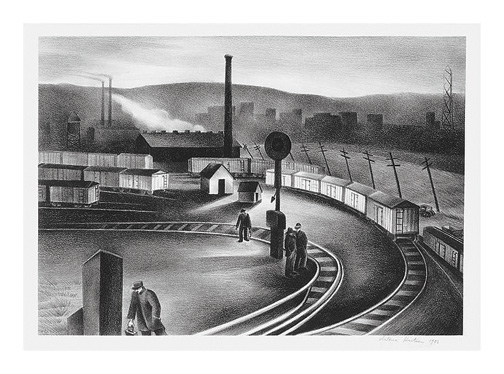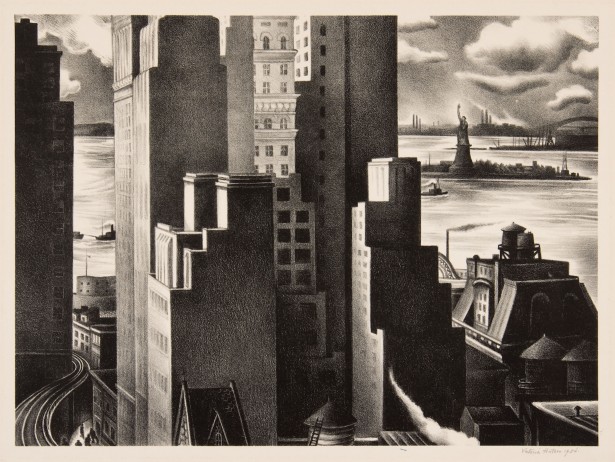In our previous installment, I introduced you to
Mabel Dwight, who focused on humorous yet sympathetic depictions of everyday life during the Great Depression. Today we'll talk about another lithographer who produced some great works during the WPA era, Victoria Hutson Huntley (1900-1971).
 |
| Victoria Hutson Huntley wiping a lithography stone while her dog keeps her company. Image courtesy of http://www.wppl.org/wphistory/VictoriaHutsonHuntley.html |
|
|
|
Originally from New Jersey, Huntley grew up in the New York area, and studied at the New York School of Fine Art and the Arts Student League. Her teachers included the likes of
John Sloan, one of the members of the
Ashcan School, as well as
Max Weber and
Kenneth Hayes Miller. After she graduated, she taught art in Denton, Texas at the College of Industrial Arts. She later married Dr. Ralph Huntley, a physics professor, and the two eventually settled in Florida, where they both taught at
Rollins College.
Huntley received early acclaim for her industrial-themed lithographs, in part because the urban subjects were considered unusual for a woman to undertake at the time. She won awards at both the Art Institute of Chicago's International Exhibition in 1930, and the Philadelphia Print Club's National Exhibition of 1933. She also worked as a muralist, painting works for such places as the post offices in Springville, New York, and Greenwich, Connecticut.
 |
| Freight, 1933, lithograph. Image courtesy of http://keithsheridan.com/huntley.html |
 |
| New York Window, 1930, Lithograph. Images courtesy of http://americanart.si.edu/collections/search/artwork/?id=11025 |
 |
| Lower New York, 1934, lithograph. Image courtesy of http://www.troutgallery.org/collections/history-of-the-collections/ | | | | | | | | | |
|
|
|
Huntley did not limit her oeuvre to urban scenes, however. On the contrary, she also created lithographs of flowers and other organic subjects, as well as interiors and still life scenes. These examples of her work can be found in the Roswell Museum collection. Though Huntley did not work in New Mexico herself, she knew
Howard Cook and
Barbara Latham, and gave both of them examples of her prints. When Cook and Latham began donating their work to the RMAC in the late 1960s, they included these pieces.
 |
| Jack-in-the-Pulpit, 1930, lithograph. Image courtesy of Roswell Museum and Art Center. |
 |
| Interior, 1930, lithograph. Images courtesy of Roswell Museum and Art Center. |
 |
| Still Life, 1930, lithograph. Image courtesy of http://americanart.si.edu/collections/search/artwork/?id=11030 |
Most of the works I've shown you here date from the 1930s, but you shouldn't think that her work stopped after the Great Depression. On the contrary, she continued to make lithographs until the end of her life, as can be seen here in this late example,
Snow Geese. After she moved to Florida, she became especially interested in the Everglades, and created works focusing around this special place.
Right to the end, she remained committed to lithography as an artistic medium.
 |
Snow Geese, 1971, lithograph. Image courtesy of http://www.artoftheprint.com/artistpages/huntley_victoria_ebbels_hutson_snowgeese.htm
Want to learn more? Here are some sites for you:
http://www.wppl.org/wphistory/VictoriaHutsonHuntley.html
http://www.artoftheprint.com/artistpages/huntley_victoria_ebbels_hutson_snowgeese.htm
http://www.aaa.si.edu/collections/victoria-hutson-huntley-papers-15665
|








Comments
Post a Comment
Questions? Comments? Speak your mind here.